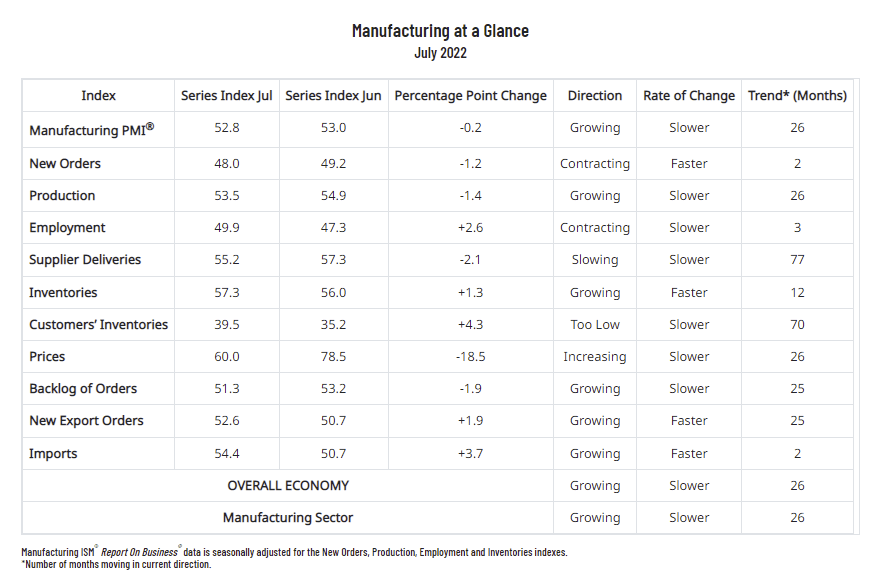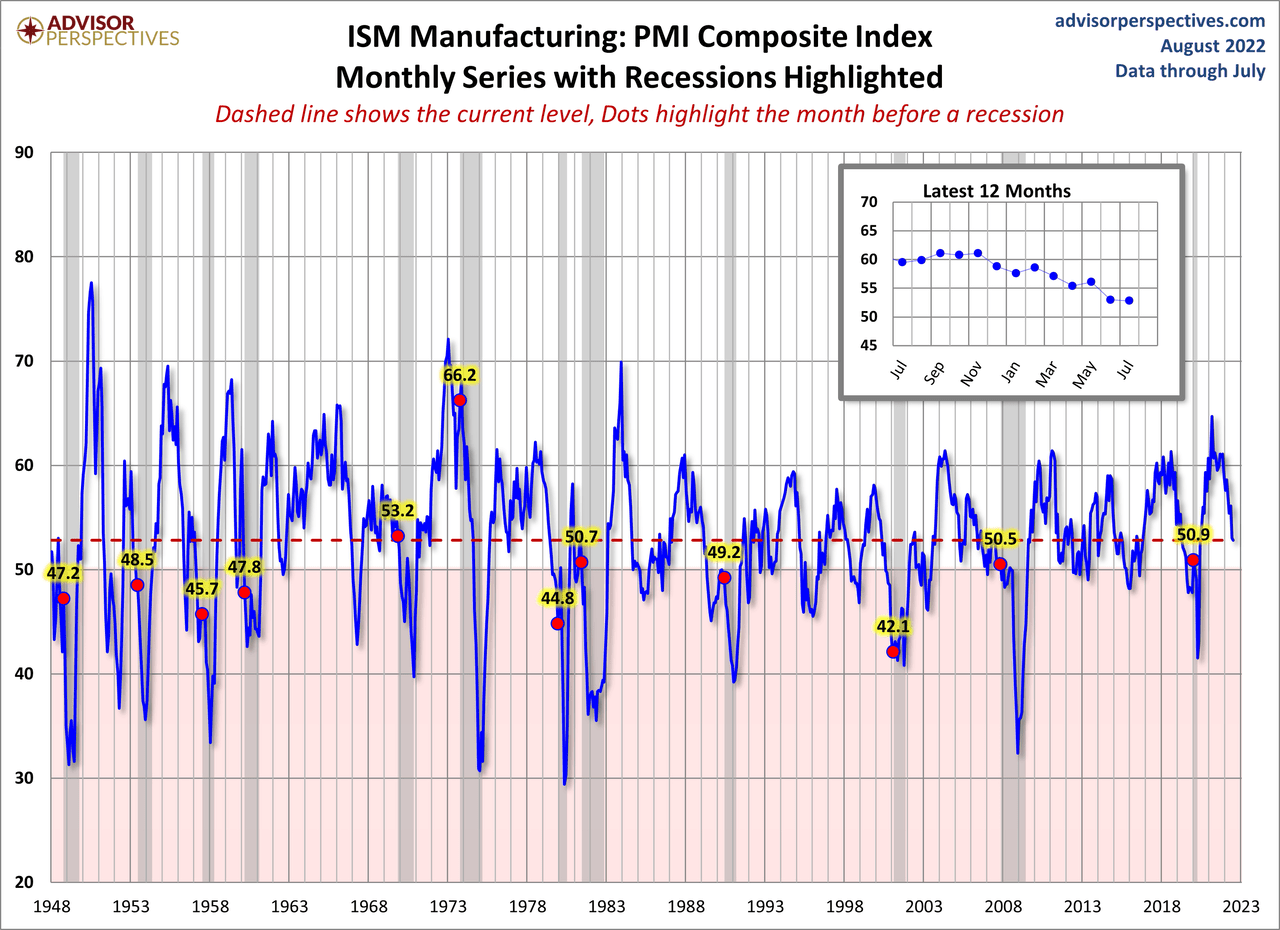Nuthawut Somsuk/iStock via Getty Images
By Jill Mislinski
This morning, the Institute for Supply Management published its monthly Manufacturing Report for July. The latest headline Purchasing Managers Index (PMI) was 52.8, a decrease of 0.2 from 53.0 the previous month and in expansion territory. Today’s headline number was above the Investing.com forecast of 52.0.
Here is an excerpt from the report:
Fiore continues, “The U.S. manufacturing sector continues expanding – though slightly less so in July – as new order rates continue to contract, supplier deliveries improve and prices soften to acceptable levels. According to Business Survey Committee respondents’ comments, companies continue to hire at strong rates, with few indications of layoffs, hiring freezes or headcount reduction through attrition. Panelists reported higher rates of quits, reversing June’s positive trend. Prices expansion eased dramatically in July, but instability in global energy markets continues. Sentiment remained optimistic regarding demand, with six positive growth comments for every cautious comment. Panelists are now expressing concern about a softening in the economy, as new order rates contracted for the second month amid developing anxiety about excess inventory in the supply chain. Demand dropped, with the (1) New Orders Index contracting again, (2) Customers’ Inventories Index remaining at a low level but approaching 40 percent and (3) Backlog of Orders Index decreasing but still in growth territory. Consumption (measured by the Production and Employment indexes) was mixed during the period, with a combined positive 1.2-percentage point impact on the Manufacturing PMI® calculation. The Employment Index contracted for the third month in a row after expanding for eight straight months (September 2021 through April), but panelists again indicated month-over-month improvement in hiring ability in July. Challenges with turnover (quits and retirements) and resulting backfilling continue to plague efforts to adequately staff organizations. Inputs – expressed as supplier deliveries, inventories and imports – continued to constrain production expansion, but to a significantly lesser extent compared to June. The Supplier Deliveries Index indicated deliveries slowed at a slower rate in July, which was supported by an increase in the Inventories Index. The Imports Index continued to expand in July after one month of contraction preceded by six straight months of growth. The Prices Index increased for the 26th consecutive month, at a much slower rate compared to June. See report
Here is the table of PMI components.

The chart below shows the Manufacturing Composite series, which stretches back to 1948. The eleven recessions during this time frame are indicated along with the index value the month before the recession starts.
 For a diffusion index, the latest reading is 52.8 and indicates expansion. What sort of correlation does that have with the months before the start of recessions? Check out the red dots in the chart above.
For a diffusion index, the latest reading is 52.8 and indicates expansion. What sort of correlation does that have with the months before the start of recessions? Check out the red dots in the chart above.
Here is a closer look at the series beginning at the turn of the century.
Note: This commentary used the FRED USRECP series (Peak through the Period preceding the Trough) to highlight the recessions in the charts above. For example, the NBER dates the last cycle peak as December 2007, the trough as June 2009 and the duration as 18 months. The USRECP series thus flags December 2007 as the start of the recession and May 2009 as the last month of the recession, giving us the 18-month duration. The dot for the last recession in the charts above is thus for November 2007. The “Peak through the Period preceding the Trough” series is the one FRED uses in its monthly charts, as illustrated here.
Editor’s Note: The summary bullets for this article were chosen by Seeking Alpha editors.



Be the first to comment